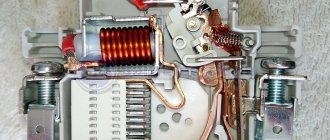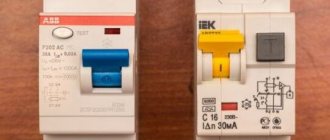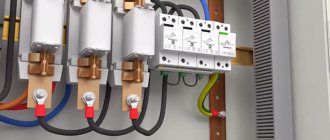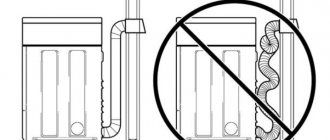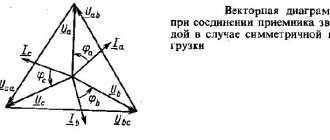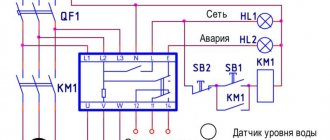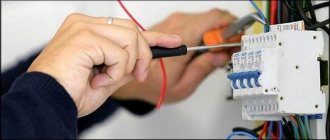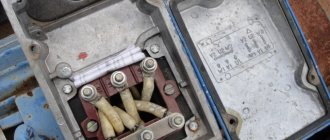The battery in a car is used as a source of electricity to start the engine. When the engine is running, the generator produces energy, charging the battery itself. But when the car is turned off, the battery serves as the power source, powering all consumers. Since the range of car gadgets is growing every year and they are becoming more popular, one power source does not always cope with its job and an additional battery is required for the car, which will allow you to listen to music, prepare food, drinks, and watch movies even far from civilization.
Connecting a second battery to the car
The purpose of the battery is to ensure that the car starts while driving, and to feed the consumers of the on-board network using a generator-battery tandem. But modern cars are equipped with additional devices. Their total power at times exceeds the capabilities of the power unit. As a result, the battery runs out and cannot start the engine. There is a need to install a second battery in the car.
How to connect a second battery in a car
The problem of finding a place for an additional device is often solved by using the trunk. You should not use niches under the seats in the cabin - emissions from a working battery are harmful.
The issue of restoring the charge in the second battery in the car should be resolved. The generator is designed to work in tandem with one battery of a certain capacity. Connecting a second battery overloads the generator. You can charge the second battery from the mains, but this is inconvenient. This means that it is necessary to find a way to power the assistant from the on-board network without shortening the service life of the generator.
Ways to connect two sources:
- use a resistor for adjustment, setting the response threshold, to connect the second battery;
- connection diagram, combine both energy sources at the time of startup, providing a large starting current;
- by installing 2 batteries, make sure that one is always fully charged - for extreme sports enthusiasts who may require an electric winch;
- use the energy of the second battery in the car for music or to operate the media system.
Which batteries to use
There are several reasons to install another battery. This is important to do if you often use the following in your car:
- abnormal heater;
- starting device;
- coffee maker;
- tablet;
- DVD player;
- modern anti-theft system, etc.
But the question remains open about which battery will be better to choose.
There are several options that are most often discussed:
- classic lead-acid batteries;
- gel devices;
- AGM type battery.
To understand which battery would be better to choose, it is worth considering the strengths and weaknesses of the presented options.
Lead-acid
There is only one argument in favor of such batteries. This is a low price. But there are several objective reasons why conventional classic lead-acid batteries (WET) are not used in cars when installing additional powerful consumers.
Their main disadvantages are considered to be:
- short service life;
- rapid wear during active use;
- Cans can only be placed vertically;
- the voltage may drop significantly;
- they cannot be used in closed spaces;
- these batteries cannot be placed in the trunk;
- It takes a long time to fully recharge.
That is, there is no point in considering such an option at all.
Gel
Now let's look at the pros and cons of gel batteries.
Strengths include:
- good internal resistance indicators;
- high resistance to deep discharges;
- Possibility of installation in any position;
- there are no harmful fumes during operation.
But there are also several disadvantages:
- when charging, you need to take high-quality automatic chargers;
- if the temperature outside is very low, the battery will not be able to deliver large current;
- This is a fairly expensive type of battery.
Quite a good option. But there is one more.
AGM
Most often, batteries made using AGM technology are chosen. They are somewhat different from gel ones, since fiberglass and special additives are used inside.
The existing advantages and disadvantages of AGM batteries make it possible to use such batteries as power sources.
Strengths include:
- resistance to voltage sags;
- fast charge;
- resistance to deep discharge;
- absence of dangerous fumes;
- completely sealed housing.
As in the case of GEL batteries, the stumbling block here may be the high cost and the need to use a charger with an automatic switch.
If you are planning to install an audio system, connect a powerful car vacuum cleaner, or a compressor to your car, then the best choice will be GEL or AGM batteries.
How to connect a second battery in a car
Often, installing a second battery in a car solves several problems: separate power supply for household appliances and doubling the current to the winch. But there is only one generator. How to connect a second battery? By connecting the batteries in parallel, we will force the generator to supply double the current to the network. One battery can parasitize at the expense of another, taking more charge. The batteries may drain evenly, preventing the starter from starting.
1.Using a separation controller when connecting a second battery to the car will allow you to charge the battery one at a time and use the charge rationally. Switching devices represent switches of various designs. An example is battery decoupling devices (BIDs), the most popular being URA 200. Using this device, you can use double energy when operating a winch or starting the engine in winter.
2. The kit for installing a second battery includes a semiconductor resistor. The connection via a diode isolator separates the power supply from the vehicle’s on-board network and additional household systems. During periods of inactivity, the additional battery will be discharged, supporting the operation of gadgets. The main battery remains ready to start the engine. But while driving, the generator recharges both batteries. In order to use the second battery in the main circuit, it will need to be moved to the main socket.
3. The most rational connection diagram for the second and subsequent batteries is developed with the installation of a charging switch. The device can be manual or automatic, but one battery is always charged from the generator. The charge level of all batteries is displayed on the control panel. The driver has a choice of what is the priority at the moment: music, air conditioning or the willingness to winch.
There are cars where the manufacturer has provided the circuit and installation of a second battery. But more often you have to create comfort in the car with your own hands.
Why is a second battery needed?
There are many areas of application for a second battery:
- Ensuring the operation of additional electrical appliances necessary for a comfortable pastime in nature (for example, such as a refrigerator, lighting fixtures, musical equipment).
- A vehicle equipped with an electric winch must in any case be equipped with a peripheral battery.
- Executive class vehicles are, by default, equipped with a video player, TV, coffee maker, microwave and other electrical appliances that provide increased comfort when traveling.
- Security video surveillance systems, anti-theft systems, all kinds of radio alarms, as well as devices designed for active vehicle protection, must also be equipped with their own separate battery.
Battery switch
A four-position switch (OFF, 1, BOTH and 2) connects the batteries in parallel during charging and isolates the starter battery after charging.
If two alternately connected batteries are installed, the connection is made as shown in the figure
On the battery side, only 24-hour readiness devices - a bilge pump, charger, auxiliary generator or safety devices - are connected through fuses or circuit breakers to the switch.
Connection diagram of the generator to the four-position switch. In the figure on the left, the generator is connected on the load side. On the right - the generator is connected to the battery
The engine generator is connected in one of two ways - on the load side or to one of the batteries. If the generator is connected on the load side, the batteries can be charged simultaneously or independently of each other. But the generator will require additional protection that will protect the rectifier diodes if the switch is set to OFF while the engine is running. Protection may include an open circuit function in the switch or a clear warning message: “Never switch off while the engine is running.”
To avoid damaging the generator when switching while the engine is running, the switch first connects the batteries in parallel and then disconnects one of them (make-before brake function). Even so, dirty or corroded contacts on the switch can accidentally damage the alternator.
If the generator is connected to a second battery, then the starting battery will only be charged simultaneously with the additional battery (BOTH switch position). But you cannot accidentally damage the generator.
A battery switch is a simple and economical way to charge two batteries at the same time. However, different types of batteries will charge unevenly - one will be overcharged and the other will be undercharged. In addition, if the batteries are not connected in parallel, one of them will not charge, and if the engine is turned off and the switch is left in the BOTH position, both batteries will be discharged.
The battery switch is often installed in an accessible location away from the batteries and generator. In a system with a powerful generator and battery, this requires pulling expensive, large-section cables, and to avoid this, it is better to use other methods of charging two batteries.
Second battery: to have or not to have?
As you can see, it is quite possible to connect a second battery. You just need to think in advance what equipment you need to connect, evaluate your financial capabilities and estimate whether there is enough space in your car for new equipment.
With financial investments and proper installation of equipment, you will get an excellent circuit of two or more batteries.
And then you can use your car to go camping, fishing, on a long trip, etc. without any problems. Everything will be ready to connect additional equipment.
Remote switch
A remote battery switch is a power relay that is installed next to the battery, and its activation button is placed in a location convenient for the user. This arrangement reduces cable length, cost, weight and voltage drop and is often more cost-effective than a mechanical battery switch.
Criteria for selecting a remote switch:
- Short-term and continuous load must correspond to the power of the current source
- Status indicators on the body and on the on/off button
- A bistable relay is used as an actuator, which consumes current only at the moment of switching, but not in the closed state
- Fireproof design for installation in gasoline engine compartments
- Protection class IP66-IP68
Diode insulator
Diode isolator is a common method of charging two or more batteries simultaneously. The output current of the generator is supplied to diodes, which allow it to pass in only one direction and block its flow between the batteries.
Each battery is assigned its own diode, with which any number of batteries can be charged simultaneously. During operation, the batteries are isolated from each other and the on-board equipment cannot accidentally discharge the starting battery.
Although diode isolators appear to be ideal devices for charging two batteries, they have a significant drawback that is often overlooked.
Problems when using a battery diode insulator. Diagram 1 - Voltage on additional batteries is 12.8 volts. They will never charge. Scheme 2 - An external regulator increases the generator voltage. The voltage on the starting battery is 15.2 Volts. It's recharging. The voltage on the additional batteries is 14.2 V. They are undercharged. Scheme 3 - The external regulator increased the generator voltage even more. The starter battery will boil.
A diode can be compared to a valve installed in a water pipe. If the valve is held closed by a spring, then in order to open it, the water pressure must overcome the force of the spring. To open the diode, it is also necessary to perform additional work, which leads to a voltage drop between its input and output.
Depending on the type of diode and the ratio of its rating to the current flowing in the charging circuit, the voltage drop across the diode is 0.6-1.0 volts. Since a difference of tenths of a volt has a significant impact on the speed and quality of charging the battery, the voltage drop across the diodes makes the charging system inoperable.
A standard voltage regulator installed inside an alternator measures battery voltage at the alternator output terminal rather than at the battery itself. If a diode appears in the charging circuit, the regulator “thinks” that the battery voltage is 14.2 volts, although in fact it is 13.6 volts.
If this voltage drop is not compensated for, the regulator will shut down the generator long before the batteries are fully charged. The charging time will increase several times, the batteries will be chronically undercharged and suffer from sulfation.
Almost always the best solution for already installed diode isolators is to throw them away and replace them with a charging relay. If you don't want to do this, you can install a remote voltage regulator or Alternator to Battery Charger from Sterling Power.
These devices take control of the operation of the generator from the built-in voltage regulator, monitor the voltage on the batteries and increase it, taking into account the drop in the diodes. In addition, they charge batteries using a four-stage algorithm, which is much more efficient than charging directly from a generator.
Charging relays
The battery decoupling relay eliminates user intervention and voltage drop in the charging circuit. On some models, the relay control circuit is connected to the ignition key and the relay connects the batteries in parallel after the engine starts running. As soon as the control voltage disappears, the relay opens and isolates the batteries. More advanced models automatically detect the voltage at one end of the connected circuit and trigger when it reaches a preset value (usually 13.3 volts).
If the cables connecting the batteries and relays are chosen correctly, there will be no voltage drop in them, and since the length of the cables is short, the charging relay will cost no more than a diode insulator.
Some relays draw current when closed, others only when activated. If the relay is used with low-power charging sources such as solar panels, it is better to use bistable relays and eliminate parasitic losses.
The relays are not suitable for charging an additional battery on vehicles complying with EURO 5/EURO 6 standards.
About parallel charging
I use this parallel charging:
Very high quality plastic and decent weight, soldering is clean. The kit includes a balancing cable and the board itself.
Photos
Smart decoupling devices
Charging relays are constantly being improved. One of the latest models, Sterling Power Pro Split R, has a voltage drop of 0.01 Volts and the following features:
- First of all, it charges the starter battery until its voltage reaches a preset value.
- When the starter battery is charged, it isolates it and brings the voltage on the next battery to the same value. Returns to charging the starter battery if it detects that its voltage has decreased.
- Repeats this process for all connected batteries.
- After all the batteries are charged to the same voltage, connect them all in parallel.
- If the voltage on any battery drops, for example due to a high-power load connected, Pro Split R isolates all batteries and charges only the one whose voltage has dropped.
- To accurately determine the moment of switching, it controls the rate of change of voltage, and does not simply trigger when a certain threshold is reached.
- The 180 A model allows overcurrent up to 2000 A
How does parallel charging work?
Schematic demonstration of work:
This connection is called parallel, that is, in this case, all 4 batteries are connected in a single circuit.
Each battery has a capacity of 1300mAh and a voltage of 16.8V. With a parallel connection, the total capacity will increase to 5200mAh, but the voltage will remain the same - 16.8V.
With a series connection, the voltage increases, but the capacitance remains the same. In our case it would be: 67.2V and 1300mAh.
Charging device
A common drawback of the described devices is charging parallel-connected batteries using the same algorithm. But since the starting and traction batteries accept charging differently, one will regularly be overcharged while the other will be undercharged. The difference will increase if a large-capacity traction battery is connected to a relatively small starting battery. The only way to solve this problem is to install its own voltage regulator for each battery and adjust it to the type of battery being used. This is easy to do if two generators are installed.
In electrical systems with one generator, a special charging device is required, which is connected between the starting and traction batteries. The device turns on and charges the second battery using a four-stage algorithm as soon as the generator starts working. Thanks to this, different types of batteries can be used simultaneously. Some models allow you to work with two different voltages - receive 12 volts at the input and output 24 or 36 volts.
Unlike external DC-DC regulators, chargers do not increase the voltage on the alternator and can be used on engines with an ECU and on vehicles with alternators that comply with EURO5 / EURO6 standards
What problems does a second battery solve?
There are several problems that an additional battery can help solve. These are the ones worth talking about.
For starters, this is a voltage drop, which is very common in cars with non-standard and fairly powerful acoustics.
This effect occurs for several reasons. This is usually poor quality wiring or problems with power distributors. Conventional lead-acid batteries of the antimony type are not at all suitable for powering non-standard consumers. For a laptop, heater or acoustics to work stably, a voltage in the range of 12.8 to 14 V is required. Under high loads, the voltage sags because there is not enough charging current, and the power system has poor current conductivity.
There are 2 main reasons for the occurrence of so-called voltage sags. Namely:
- the increased internal resistance of the battery does not allow the subwoofer to provide the required amount of energy;
- The battery is not positioned correctly.
An additional problem is the situation when one power source supplies all the needs of the vehicle at once. Everything is simple here. When the car is on the road, the generator supplies power and the battery is charged in parallel. The current consumer does not experience any problems.
But when the car is parked with the ignition off and the heating, audio system, and player are turned on at full power, the power comes from the battery. With prolonged use, the single battery will soon run out. This will result in the fact that when you try to start the car, there is simply no current left to start the internal combustion engine. The battery will go into a deep discharge state, from which it will be difficult to remove it.
